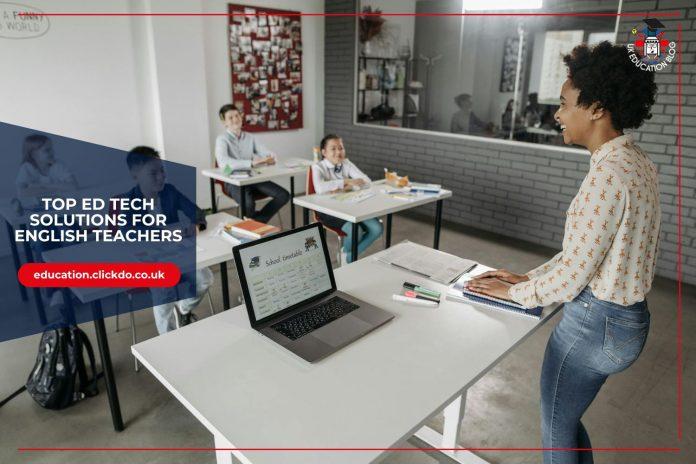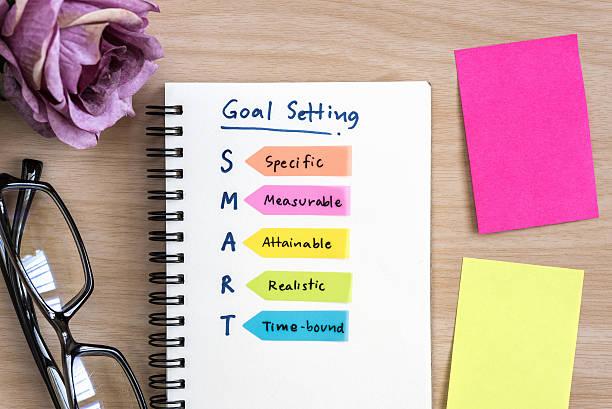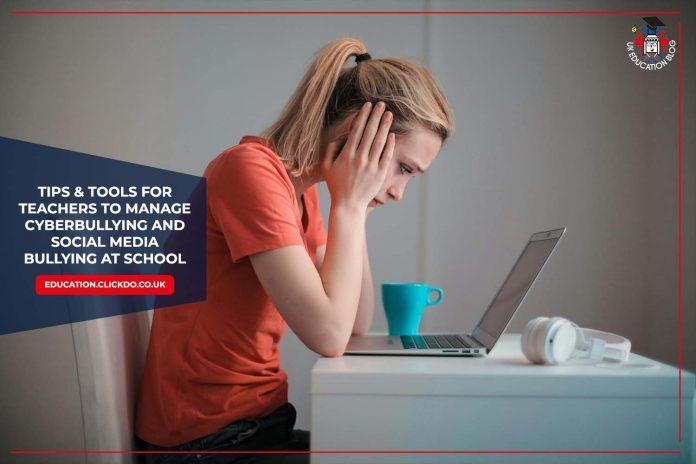Enabling technology in the classroom has been one of the most significant changes witnessed in the education sector in recent years.
Technology does not only change the way students interact with their teachers but also how they learn and communicate with their peers. Preparing students for exams and the digital age by using educational technology can tick many boxes as an English teacher.
However, you must ensure you use the best-rated and resourceful online solutions and EdTech products out there to secure ideal learning outcomes for your students.
Some of these might require a monthly or annual subscription including fees for school access, but most schools will be happy to pay if they offer good value for their setting.
Therefore, we have compiled a list of the top-rated 20 Ed Tech products and solutions currently on the market for English teachers.
Disclaimer: All app details listed are based on the latest information available at the time this post was published. The apps have been listed according to the number of followers on social media.
1. BBC Learning English

Age range: All ages
Price: Free
BBC Learning English is a digital platform offering resources and activities to help English language learners.
It lets users improve their speaking, listening, reading, and writing skills. And covers a variety of topics, including news, culture, and everyday life.
Key features:
- A huge pool of resources including audio and video content, articles, quizzes, and interactive activities.
- A wide variety of topics from everyday life make it relevant for users.
- Uses informative and engaging news broadcasts and interviews to help improve listening and speaking skills.
- Activities and quizzes provide instant feedback.
- Helps improve overall language proficiency with a deep focus on pronunciation and grammar.
- Offers lesson plans and classroom activity ideas for teachers
- A user-friendly interface that makes it easy to use for learners of all ages.
- The BBC Learning English newsletter provides weekly updates and new content.
- It can be easily used in conjunction with other language-learning tools
Available On: Web
Social Presence:
2. Google Apps for Education

Age Range: All ages
Price: Free
Google Apps for Education is a suite of productivity and communication tools especially curated for schools and educational institutions.
It includes all the general Google apps and platforms that English teachers can use to make their lessons more engaging and impactful.
Key Tools:
- Gmail for safe and reliable email communication.
- Google Drive for storing documents, spreadsheets, and presentations on the cloud.
- Google Calendar for scheduling classes and study sessions.
- Google Classroom for conducting virtual classes, allotting and collecting assignments
- Google Sites for building and publishing eLearning sites.
- Google Forms for taking assessments, quizzes, tests, and conducting surveys.
- Google Slides for multimedia presentations that can be created and accessed on the glow.
- Google Drawings for making diagrams, charts, and graphics.
- Google Jamboard for brainstorming with students.
- Google Meet for virtual meetings.
Key Features
- Ease of use as almost everyone is comfortable using the G-suite of services.
- No data privacy concerns as information is transmitted and stored confidentially.
- All features are available for free on any Internet-connected device. Institutions can contact support for quotes if they need premium services.
Available On: Web, Android & iOS
Social Presence:
3. Evernote

Age range: All ages
Price: The basic plan is available for free. To learn more about the paid plans with greater features, click here.
Evernote serves as a robust tool for creating, editing, saving, sharing, and deleting notes. It aids English teachers in crafting notes on various topics for dissemination to students during instruction.
Key features:
- Teachers can review and assess notes generated by students, facilitating schedule planning, assignment management, to-do lists, and setting reminders.
- The platform enables the inclusion of pictures, images, photos, and audio to augment comprehension of note content, which proves beneficial during teaching and revision sessions.
- Evernote offers seamless accessibility across devices, ensuring work can be conducted anywhere.
- Its functionality extends to encompass text, images, audio, scans, PDFs, and documents within notes, making them more comprehensive.
- Integration of notes, tasks, and schedules streamlines productivity.
- Robust search capabilities ensure swift retrieval of information when needed.
- It Can be synced with Outlook Calendar for enjoying single-click access to event-specific notes.
Available On: Web, Android & iOS
Social Presence:
- Twitter: 396.6K Followers
- Facebook: 396K Followers
- Instagram: 61.4K Followers
- YouTube: 128K Subscribers
4. Discovery Education

Age Range: K-12 students
Price: Subscription-based, click on this link to fill up a form requesting a price
Discovery Education is a digital learning platform with educational resources and tools for both teachers and students. It includes video content, interactive simulations, virtual field trips, and more, all designed to support and enhance classroom instruction.
Key Features:
- Offers access to 200,000+ digital assets.
- Virtual field trips, interactive simulations, and other vetted and curated content
- Tools for creating and sharing custom lessons and activities with Quiz and Studio sections.
- Aligned to national and international standards for curriculum design and instruction.
- Offers options to customise and personalise the platform to unique institutional needs.
- Available on multiple platforms, including desktops, laptops, and mobile devices.
- Toolkits, on-demand sessions, and live events for teachers to attend.
- Access to a global network of educators which serves as a source of inspiration and a platform to share best practices.
Available On: Microsoft Store
Social Presence:
5. English Central

Age range: All ages
Price: Subscription-based platform, to learn more about the pricing plans, click here.
English Central is an eLearning platform designed especially for English language instruction.
It offers interactive video-based lessons, activities, and assessments for improving speaking, listening, reading, and writing skills.
Key features:
- Offers video-based lessons featuring authentic content which makes learning fun and entertaining.
- Teachers can customise the lesson plans and assessments based on their class’s specific needs.
- Students can track their progress in real-time progress tracking and also get immediate feedback.
- English Central leverages adaptive technology which offers personalised learning.
- English Central can be easily accessed from any Internet-connected device
- Videos are recommended based on users’ interests and their language proficiency level.
- Users can go live and have 1-on-1 conversations with tutors.
Available On: Web, Android & iOS
Social Presence:
- Twitter: 4478 Followers
- Facebook: 191K Followers
- Instagram: 297K Followers
- YouTube: 21.9K Subscribers
- LinkedIn: 19K Followers
6. BrainPOP

Age Range: 3-18 years old
Price: Subscription-based. You need to fill out the access form by clicking here.
BrainPop is an eLearning platform that offers animated content to support teaching and learning.
It can be used by schools, homeschoolers, and educators globally.
The best part of using BrainPop for your class is that it makes learning fun and interactive.
Key Features:
- Offers animated, engaging videos on a wide range of topics that are sorted into units.
- Comes with quizzes and interactive games to reinforce learning.
- Teachers can get pre-made lesson plans and activities for their classes.
- Has a vast library of resources that includes articles, movies, and quizzes.
- Allows teachers to give customisable assessments and provides access to robust reporting tools.
- Get access to a virtual community of teachers and educators from across the globe.
- Offers comprehensive curriculum aligned with US state standards and also suitable for international coursework standards.
- Teachers can get personalised recommendations based on student progress.
- Available in multiple languages.
- Also offers a set of parent resources and tools to support at-home learning.
Available On: Web, Android & iOS
Social Presence:
- Facebook: 84K Followers
- Twitter: 39.4K Followers
- Pinterest: 4.2K Followers
- YouTube: 190K Subscribers
- Instagram: 140K Followers
7. Flipgrid

Age range: All ages
Price: Free
Imagine a tool that allows educators to engage with students through both virtual reality and videos. Enter Flipgrid, a versatile platform enabling teachers to foster interaction via text-based forums and integrate video learning into their classes effortlessly. Teachers can start by creating a group and inviting students, maintaining full control over who joins and what they can access. Next, they will have to post topics—text or video instructions—to prompt student responses.
Key features:
- With Flipgrid, teachers can create dedicated grids for specific topics and prompt students to record short videos on those subjects for upload.
- Tutors can record and share their thoughts using Flip’s built-in camera, adding effects and sharing as video, audio, or text easily via web browser or mobile app.
- English teachers may connect with educators worldwide on Flip and discover innovative ways they incorporate Flip into their classrooms.
- You can use Flip to assess student understanding at the beginning and end of teaching units, helping gauge retention and comprehension.
- Flip’s Topic Copilot assists in creating engaging lessons aligned with curriculum standards.
- Students benefit from Flip for presentations, refining ideas, practising speech, sharing screens for content focus, and reducing anxiety about public speaking.
Available On: Web, Android & iOS
Social Presence:
- Twitter: 176.2K Followers
- Facebook: 25K Followers
- LinkedIn: 27K Followers
- YouTube: 16.3K Subscribers
- Instagram: 25K Followers
8. iReady

Age Range: K-8 students
Price: To learn more about the pricing click here.
i-Ready is a comprehensive online learning platform that is designed to support educators with resources, tools, and research. It focuses on two main subjects: English and Mathematics.
Key Features:
- Offers personalised instruction and assessments which help students build essential skills and reach their true potential.
- Has two products – iReady Learning which offers instructional resources for educators and iReady Assessment which offers a collection of assessments for all grade levels.
- Offers real-time, data-driven insights that help steer the direction of teaching to support student growth
- Access to a comprehensive library of resources and tools
- Integrates and works well with several LMS platforms
- Collaboration tools for teacher-student and peer-to-peer interaction
- Teachers can engage with a global community of educators online and share and learn about effective teaching methods.
Social Presence:
- Facebook: 12K Followers
- Twitter: 15.6K Followers
- LinkedIn: 176K Followers
- Instagram: 4726 Followers
- Pinterest: 1.8K Followers
9. Quizlet

Age range: All ages
Price: Free trial for a month after which you need to subscribe to the paid plan.
Quizlet is a popular eLearning platform offering various study tools and games. These help students learn and memorise information about language learning, science, history, and more.
Key features:
- Access to a huge library of study materials created by educators and the Quizlet.
- Make studying fun and engaging with interactive games and activities.
- Teachers can create custom study sets and share them with students or even other Quizlet users.
- It Can be integrated with Google Classroom which aids in assigning tasks and tracking progress.
- Offers a text-to-speech feature for terms, definitions, and questions.
- Performance statistics can be monitored for individuals as well as study sets.
- Comes with an offline study mode that lets students access study materials without the Internet.
- Study materials can be enhanced by adding images, audio, and videos.
- The Collaborative study mode lets students study with peers in real-time.
- Quizlet can be accessed from any device including smartphones, tablets, and computers.
Available On: Web, Android & iOS
Social Presence:
- Twitter: 41.8K Followers
- Facebook: 107K Followers
- Instagram: 102K Followers
- YouTube: 21.8K Subscribers
10. Newsela

Age Range: K-12 students
Price: Free; Upgrade available for unique needs and you can contact support for the pricing by clicking here.
Newsela is a digital learning platform that provides students with access to a vast library of non-fiction articles. But that’s not all. Newsela offers articles written at five different reading levels.
Thus, it offers a personalised reading experience for students. And it further helps them improve their literacy skills and deepen their understanding of various subjects.
Key Features:
- Features a vast library of freely accessible non-fiction articles written at five different reading levels.
- Personalise the reading experience based on the student’s English reading proficiency.
- Offers real-world context and articles based on current events.
- Quizzes and assessments are embedded into the platform which helps teachers track progress.
- It offers a unique set of instructional materials for teachers which can help leverage the platform in the best way.
- It Can be integrated with third-party tools and platforms like Google Classroom and other LMS platforms.
- Has a robust search function and cross-curricular content.
- Covers content in not just English language arts, but also in science, social studies, and even Spanish content.
- Has annotation and discussion tools that can foster critical thinking skills in learners.
Available On: iOS
Social Presence:
- Facebook: 15K Followers
- Twitter: 35.2K Followers
- Instagram: 14.2K Followers
- YouTube: 2.41K Subscribers
- LinkedIn: 95K Followers
11. Buncee

Age Range: Everyone
Price: 30-day free trial followed by paid plan.
Buncee is an online canvas of sorts created by Capstone. It is a platform for young children and teachers to create presentations and other types of digital content. It also offers a variety of educational games, videos, and fun activities.
Key Features:
- Contains several age-appropriate, educational games and activities
- Offers engaging videos and storytelling which can help teachers capture young children’s attention
- Offers a personalised learning experience that is based on one’s skill and capability.
- Has fun and interactive virtual worlds which promote exploration and discovery.
- Comes with a suite of reliable parental controls and monitoring tools
- Integration with other popular children’s educational apps and services like Google Classroom and MS Office 365,
- Safe and secure platform for kids to learn and play
- Available on multiple platforms, including iOS and Android devices.
Available On: Microsoft Store
Social Presence:
- Facebook: 82K Followers
- Twitter: 25.5K Followers
- Instagram: 2629 Followers
- LinkedIn: 2K Followers
- YouTube: 1.79K Subscribers
- Pinterest: 136 Followers
12. Read&Write

Age range: All ages
Price: Subscription-based, starting at $9.99 per user per month. To learn more about pricing click here.
Read&Write is a literacy support tool, which offers text-to-speech and dictation services, specially designed for those with dyslexia and literacy difficulties. It is also ideal for those who have English as a second language.
Over 20 million people from across the globe use it for reading, writing, and studying.
Key features:
- Text-to-speech functionality is available in over 40 languages. And it offers natural-sounding voices for reading aloud.
- Word predictions and spelling suggestions help improve writing and find the right vocabulary.
- Also offers highlighting and annotation tools. It works on PDFs and webpages, allowing users to take notes and track important information.
- It has an audio maker that converts written text to MP3 files.
- Visual learners are supported by its picture dictionary.
- Organising information and creating mind maps is possible with the fact mapper feature.
- Offers translation into over 100 languages, which is ideal for multilingual users.
- Read&Write also offers an extension for Google Chrome extension and an add-in for Microsoft Office.
Available On: Chrome extension, Android & iOS
Social Presence:
- Twitter: 15.1K Followers
- LinkedIn: 9K Followers
- YouTube: 12.3K Subscribers
- Facebook: 7.7K Followers
- Instagram: 4261 Followers
13. Fast ForWord

Age Range: K-12 students (especially those with language-based learning challenges)
Price: Subscription-based, click here to learn about the pricing.
Fast ForWord is a series of online educational games and exercises for English learning. The games and exercises are designed to improve the student’s language and reading skills.
It is backed by scientific research and evidence-based methods, which help students build the skills necessary for academic success.
Key Features:
- It is based on an evidence-based language and reading improvement program.
- The games are interactive and engaging, which makes learning fun.
- Claims to deliver 1 to 2 years of gain 40 to 60 hours of use.
- Especially useful for those struggling with reading, dyslexic learners, and students learning English as a second language.
- Students receive real-time feedback from virtual reading tutors and can see the areas where they need the most improvement.
- Easy and on-demand onboarding videos and guides for teachers
- Teachers can see reports and reading improvements for individual students as well as the entire class.
Available On: Purely a web-based tool.
Social Presence:
- Facebook: 5.5K Followers
- Twitter: 5153 Followers
- YouTube: 517 Subscribers
- LinkedIn: 29K Followers
- Instagram: 2032 Followers
14. NoRedInk

Age Range: Grade 3 to 5
Price: Free to get started.
You can request a quote for NoRedInk Premium by clicking here.
NoR edInk is a steadfast tool that helps students (or anyone for that matter!) improve their writing and grammar skills.
It offers personalised instructions and feedback through adaptive assessments and interactive lessons.
Key Features:
- Offers personalised instructions based on students’ writing and grammar proficiency.
- Has adaptive assessments for tracking student progress using growth reports and grade books.
- Has exercises and activities that align with various national and internal curricula and standards.
- Comes with interactive lessons and exercises to help learn faster and more.
- Provides creative writing prompts and immersive activities that can be used for practising writing skills.
- Gives real-time feedback based on grammar rules and writing conventions
- Can be integrated with LMS platforms like Google Classroom, Schoology and Canvas (Available in the premium version).
- Has a set of collaboration tools for peer review and teacher feedback.
Available On: Purely a web-based tool.
Social Presence:
15. ScreenPal

Age range: All ages
Price: Click here to learn about different price packages.
ScreenPal is a platform designed for effortless video recording with just a simple click of the ‘Start Recording’ button. It proves invaluable for English teachers looking to capture lectures, offer feedback to students, or provide demonstrations. Additionally, ScreenPal empowers teachers with features such as adding comments, notes, and highlighting key points, enhancing the teaching process.
Key features:
- It enables simultaneous recording of webcam and screen during lectures, enriching the learning experience with audio-visual content.
- Built on a Java applet foundation, ScreenPal presents a user-friendly interface, fostering immersive audio-visual learning for students.
- Its intuitive tools facilitate the creation and sharing of videos and images, ensuring authentic and effective visual communication.
- English teachers can effortlessly record their screens and webcams, transforming expertise into engaging presentations.
- With advanced features like AI speech-to-text captions, ScreenPal ensures video accessibility.
- The platform simplifies image editing with tools for annotation and customisation.
- ScreenPal also offers unlimited hosting for videos and images with robust privacy controls, enabling secure organisation and sharing.
- Its customisable video player and interactive features like quizzes and surveys engage students effectively.
- Advanced analytics provide actionable insights for English tutors.
Available On: Web, Android & iOS
Social Presence:
- Twitter: 9114 Followers
- Facebook: 14K Followers
16. Storybird

Age range: 3 to 14+
Price: The basic plan with minimum features is available for free. However, you can click here to learn more about the paid plans with advanced features.
Storybird stands out as a premier educational technology tool renowned for enriching students’ writing and language skills. Providing a dynamic platform where students can craft stories using a variety of creative tools and publish them online, Storybird enhances engagement and interactivity in language lessons for educators. Students can delve into creating storybooks, comic books, poems, cartoon strips, and long-form narratives, fostering a space for them to hone their literacy, writing, and literature abilities.
Key features:
Boasting over 10,000 captivating illustrations sourced from artists worldwide, Storybird empowers young writers to weave unique narratives infused with stunning visuals.
- Its curated art gallery sparks creativity and imagination, creating an immersive experience for learners.
- Storybird offers a comprehensive curriculum comprising over 700 guides, lessons, and challenges, enabling students to enhance their writing skills, explore various writing techniques, and develop their distinct style.
- The platform also facilitates collaboration and feedback, allowing students to share their stories and receive expert input from educators, professional editors, and fellow authors.
- Storybird streamlines classroom management with features for assignment creation and class organisation, providing educators with the tools they need to inspire genuine and creative learning experiences for their students.
Social Presence:
- Twitter: 8665 Followers
- Facebook: 2.9K Followers
- LinkedIn: 484 Followers
- YouTube: 976 Subscribers
- Instagram: 1667 Followers
17. Busy Things

Age Range: Children ages 3-11
Price: Subscription-based (free trial available). You can request a quote by clicking here.
Busy Things is a one-stop digital platform for children, offering educational games, activities, and resources to support learning and development.
It offers activities and games designed to be fun and engaging for kids along with resources that can be used by schools, teachers, and parents to make learning fun.
Key Features:
- Engaging and interactive resources to capture children’s attention and interest.
- Aligned to the UK national curriculum for primary schools. The content is also mapped for Australian and Scottish curricula
- Teachers can monitor and manage student accounts.
- Available on multiple platforms, including desktops, laptops, and mobiles.
- Free and paid apps that gamify learning are available for iOS, Android, and desktops.
- Offers downloadable PDFs and video guides for teachers for free.
Available On: Purely a web-based tool.
Social Presence:
- Twitter: 3134 Followers
- LinkedIn: 117 Followers
- YouTube: 4.62K Subscribers
- Facebook: 4K Followers
- Instagram: 1616 Followers
18. Boclips

Age range: All ages
Price: Free
Boclips offers a vast array of enriching video and media resources tailored for educators. Designed to empower learning, it provides access to exclusive content, including educational podcasts, offering flexibility in learning schedules. Through Boclips, educators gain access to a diverse collection of educational videos sourced globally, facilitating visual learning in today’s digital classrooms.
Key features:
- Students benefit from the convenience of accessing educational podcasts at their preferred time and place.
- Boclips collaborates with leading educational content producers worldwide. This collaboration fuels imagination and breathes life into learning outcomes, enriching educational experiences.
- Catering to curriculum and instructional design teams, Boclips Library simplifies the process of discovering, licensing, and integrating top-tier educational videos seamlessly into courseware.
- With partnerships boasting over 550 esteemed educational brands, Boclips offers unparalleled content accessibility under one licence.
- Boclips ensures content relevance and accessibility by meticulously tagging resources based on age level, subject area, and pedagogical use.
- With Boclips, English tutors can create engaging and distraction-free learning experiences by seamlessly integrating content into courseware via API, LTI, or embed codes.
Available On: Web
Social Presence:
- Twitter: 1008 Followers
- Facebook: 385 Followers
- LinkedIn: 9K Followers
- Instagram: 240 Followers
19. Quill

Age range: K-12 students
Price: Free
Quill is an EdTech platform offering writing activities and assessments for K-12 students.
It helps improve students’ writing skills, primarily by providing instant feedback on grammar, style, and organisation.
Key features:
- Offers a vast collection of writing activities for a wide range of topics and genres including persuasive writing, creative writing, and more.
- Instant feedback that lets students learn right while they are writing.
- Multiple writing modes, like multiple choice, short answer, and essay, challenge students while keeping them engaged.
- Teachers can track student progress and growth in writing ability over time.
- It Can be integrated with Google Classroom, which lets teachers assign and grade writing activities.
- Comes with a teacher dashboard for managing classes, assignments, and student progress.
- The reporting system includes detailed individual performance reports as well as reports for the whole class.
- Completed writing activities can be saved and shared, thus, promoting peer feedback and showcasing.
- Teachers can customise writing activities based on the unique needs of students or classes.
Available On: Web only
Social Presence:
20. PrepAI

Age range: All ages
Price: You can register for free to avail of the 15-day trial plan following which you can subscribe to any of the plans from here.
PrepAI is an innovative AI-powered tool designed to transform education and training by enabling educators and trainers to effortlessly generate high-level questions from any content. This cutting-edge solution integrates Bloom’s Taxonomy concepts, categorising learning objectives to produce questions that promote critical thinking and reasoning skills.
Key features:
- With PrepAI, educators can create AI-generated quizzes with ease, saving time and resources.
- Students can benefit from hassle-free mock tests featuring an AI-based auto-grading system.
- By offering multiple question formats and a user-friendly dashboard, PrepAI streamlines the test creation process and facilitates effective learning experiences.
- Its intuitive interface allows for seamless navigation and sharing of assessments.
- The automated grading system simplifies evaluation.
Available On: Web
Social Presence:
- Twitter: 35 Followers
- LinkedIn: 123 Followers
- Instagram: 94 Followers
- YouTube: 32 Subscribers
The Advantages of Ed Tech Products
1. More Interactive Experiences
By using technology students and teachers can get into the subject which they are learning about. One can use simulations, videos, and games to ensure that the students are not just excited with what they are doing but also fully grasping new concepts.
2. Source of Unlimited Resources
Answers to any query that one has can be found with the touch of a button using smartphones, tablets, computers, and the internet with e-safety procedures in place, monitored by the teachers.
3. Required Future Skills
Technology is dominated by businesses and the whole workforce. If technology is not used or implemented in classrooms, then we will not have a prepared generation of students with adequate digital skills needed for employment and general life tasks.
4. Saves Precious Resources
The most overlooked gain of the use of technology is the number of resources that can be saved. Assignments, books, and other things need materials like paper to be executed. The number of such resources will be greatly cut down when they are digitised.
5. Instantly Updated Information
We are aware of items that need constant change and when this occurs, educational resources like textbooks will have to be updated. This is easy to do with technology and offers cheaper and faster ways of updating compared to all books and resources having to be replaced.
6. No Heavy Backpacks
The higher in education that one gets, the more materials one is required to bring each day. However, now you can have it all online stored in a cloud or in your notebook.
The Disadvantages of Ed Tech Products
1. It is a Distraction
Distraction is the largest problem that one has when using technology in education. There is access to great educational resources through useless and time-wasting information like videos and games can also be easily accessed. E-safety and limited access for students is a key factor here for every school to consider.
2. Inappropriate Access
The Internet has a wealth of wonderful information which easily overshadows the number of harmful information. Hateful content, pornographic materials, and violence can potentially be seen by the student and the school has to prevent this from happening by establishing a clear e-safety policy that every teacher and student follows at all times.
3. Very Expensive to be Up To Date
It is true that to be up to date and have the newest technology can be costly. Public schools might struggle with funding the latest ed-tech, but often government funds help here. Less affluent parents could find it difficult to provide their children with the technology they can access at school.
4. Hinders Basic Skills
There is the automation of just about everything in technology. Instead of understanding and learning, one can use their phone to solve a problem. The students need to retain the ability to think for themselves and find their solutions.
5. Fake information on the internet
Children can come across untrue or false information online. This can be a problem where education is concerned when students seek answers to their questions. Schools are responsible for monitoring students’ internet searches and providing them with a skillset to identify and filter false from justified information.
All the Ed Tech products mentioned here help to improve competency in reading, with literacy skills including vocabulary, fluency, and comprehension. Additionally, the students will learn how to use such applications safely and competently to enhance their own learning experience. Learn more about e-safety here.
And if you’re an English tutor or teacher looking for online jobs, head here:
If you want to get in touch with us about this post or related queries, please use the form below:





 Once you’ve gained a deeper understanding of your strengths and interests, it’s time to delve into the exciting world of career exploration. Don’t be afraid to step outside your comfort zone and consider a variety of paths! You might discover a hidden passion you never knew existed.
Once you’ve gained a deeper understanding of your strengths and interests, it’s time to delve into the exciting world of career exploration. Don’t be afraid to step outside your comfort zone and consider a variety of paths! You might discover a hidden passion you never knew existed.













 and boost their confidence.
and boost their confidence.

 Attending orientation programs and joining student organizations can provide opportunities to meet like-minded individuals. Participating in intercultural events or language exchange programs can also facilitate interaction with local students. Additionally, taking the initiative to connect with classmates during group projects or study sessions can foster friendships.
Attending orientation programs and joining student organizations can provide opportunities to meet like-minded individuals. Participating in intercultural events or language exchange programs can also facilitate interaction with local students. Additionally, taking the initiative to connect with classmates during group projects or study sessions can foster friendships.


















